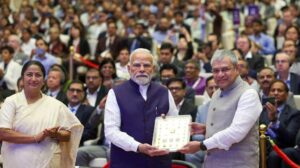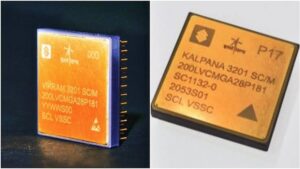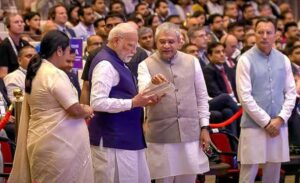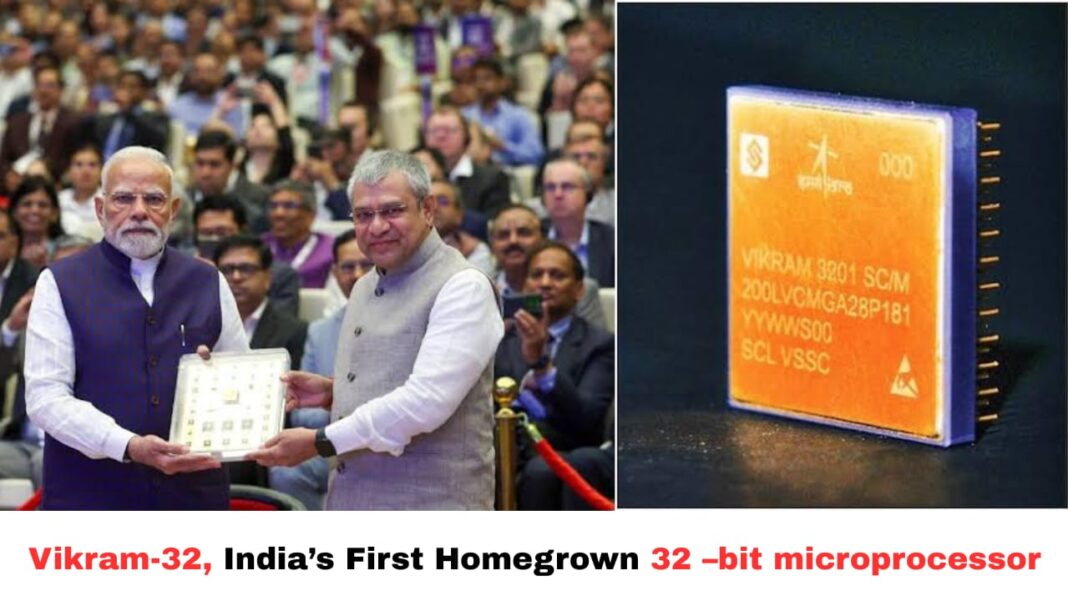Digital News Guru Technology Desk:
Semicon India 2025: Vikram-32, India’s first fully indigenous 32-bit microprocessor
On September 2, 2025, India took a decisive stride toward technological self-reliance by unveiling its first fully domestically developed 32-bit microprocessor, Vikram-32, at the Semicon India 2025 conference held in New Delhi. The chip—designed and fabricated entirely within India—marks not just a technical achievement but a symbolic moment fueling the nation’s aspirations in high-technology independence.
Unveiling the processor, Union Electronics & IT Minister Ashwini Vaishnaw presented Vikram-32 to Prime Minister Narendra Modi, highlighting a rapidly evolving semiconductor ecosystem backed by robust government support. Alongside, test chips from four other approved projects were also showcased.

A Vision of Technological Sovereignty
PM Modi inaugurated the three-day event, messaging India’s rising global credibility: “Designed & made in India, trusted by the world.” Calling semiconductors the “digital diamonds” of the modern era, he stressed their strategic significance in contemporary geopolitics and innovation landscapes.
This announcement is core to India’s Semiconductor Mission, launched in 2021, aimed at building an indigenous design and manufacturing ecosystem. Over the past 3.5 years, the initiative has led to the approval of 10 major semiconductor projects with investments exceeding Rs 1.60 lakh crore, across six states, and the construction of five manufacturing units. Simultaneously, more than 23 design startups have gained support through the Design-Linked Incentive scheme.
Technical Mastery: From Concept to Cosmos
Developed by ISRO’s Semiconductor Laboratory (SCL) in Mohali, the Vikram-32 processor is tailored for space-grade reliability. Developed by the Vikram Sarabhai Space Centre (VSSC) and fabricated using a 180 nm CMOS process, the chip is engineered to endure extreme environmental stresses—thermal, vibrational, and radiation—typical of space missions.
The architecture is a robust 32-bit design, supporting floating-point operations essential for precise calculations in real-time aerospace environments. It also includes support for the Ada programming language, a mainstay in safety-critical aerospace systems. A development ecosystem—complete with compiler, assembler, linker, and simulator—has been developed in-house by ISRO, with support for the C language under development.

Building on the legacy of its predecessor Vikram 1601—a 16-bit processor operational in ISRO vehicles since 2009—Vikram-3201 (its formal designation) introduces enhanced precision, on-chip communication interfaces like 1553B bus, and seed support for future applicability across sectors.
Proven in Orbit: Reliability Validated
A hallmark of Vikram-32’s credibility is its successful in-space validation. A batch of Vikram-3201 units flew aboard the PSLV-C60 mission as part of the Mission Management Computer on the PSLV Orbital Experimental Module (POEM-4), performing flawlessly under operational flight conditions.
This milestone underscores India’s capability to not only design but also reliably deploy high-precision chips in strategic aerospace roles—reducing dependency on foreign components and bolstering mission autonomy.
Transformational Potential Across Sectors
While space remains its primary domain, Vikram-32’s ruggedness makes it apt for diverse performance-critical applications—including defense, automotive systems, high-reliability energy infrastructure, and advanced aerospace systems.
It signals a turning point for India—from being a chip-consuming nation to one doubling as a trusted producer, with potential to support global electronics supply chains and entice international investment in semiconductor R&D and manufacturing.
Expanding the Ecosystem: Design, Infrastructure, Investment
The unveiling of Vikram-32 is only one piece in a burgeoning semiconductor ecosystem. Semicon India 2025 brings together over 20,750 participants, including 2,500 delegates from 48 countries, 150 speakers, and 350 exhibitors, spotlighting sessions on chip fabrication, advanced packaging, AI-driven design, infrastructure readiness, and policy frameworks.

India’s strategic push also includes pilot OSAT facilities, developed with partners like CG-Semi in Gujarat, highlighting ambition for comprehensive vertically integrated chip value chains—spanning design, fabrication, packaging, and testing.
Conclusion: A New Dawn for India’s Chip Ecosystem
The unveiling of Vikram-32 is far more than a technological debut; it represents a powerful statement of capability, intent, and self-reliance. Endorsed at the highest levels, supported by policy, and validated in space, it lays the foundation for India to emerge as a credible semiconductor hub—and not just for its own needs, but for the world’s.
As Prime Minister Modi noted, in a digital era shaped by chips, “the world is ready to build the semiconductor future with India.” The launch of Vikram-32 may just have accelerated that journey.
You May Also Read: PM Modi Slams Opposition: ‘Insulting My Mother Is Insulting Every Woman’








